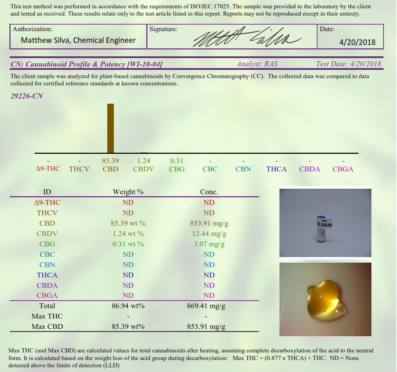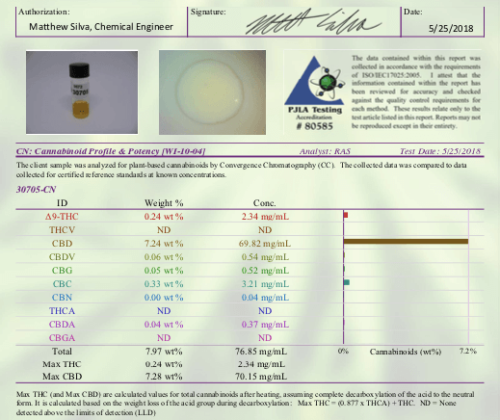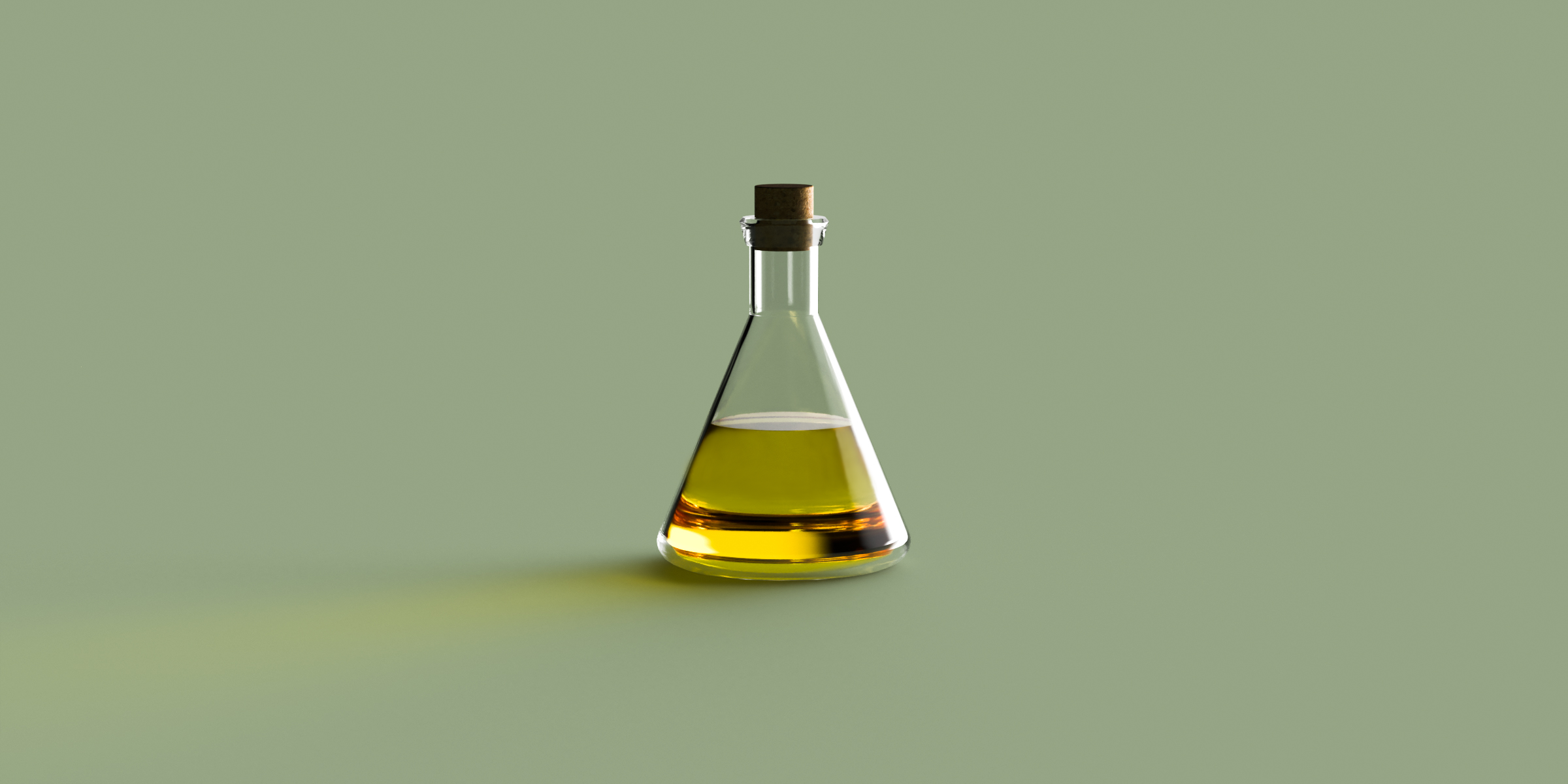Defining THC-Free CBD Oil
Find Out How Some Tinctures May Actually Have More THC Than a Marijuana Joint
Read this blog post before shopping for a CBD product.
Note: This blog post was last revised on January 2nd, 2020.
What Does THC-Free Mean?
Understanding the lingo of a rapidly expanding CBD industry, which lacks regulations and standards, can be difficult. Countless marketers bandy about odd and confusing claims. One of the most frequent assertions is that CBD products are “THC-free.” However, the true definition of this claim may not be what you expect. Let’s explore what it means to be considered “THC-free.”
The industry and legal standard for THC concentration in CBD products is less than 0.3% THC by weight. This means that a CBD product may legally contain up to three parts of THC for every 1000 parts of oil by weight. In order to determine if a product is within this legal limit, reputable CBD manufacturers have their products tested by third-party labs to obtain a Certificate of Analysis (COA). What has catapulted Kazmira as a CBD manufacturing and wholesaling leader is our unique Imperial Oil™.
What does ‘ND’ THC Mean?
Imperial Oil™ is a ~90% CBD oil with other minor cannabinoids and terpenes, as well as non-detect levels of THC. This “non-detect” (ND) level is the key to understanding this concept.
Claiming “Zero-THC” is easy for a business owner, but from a scientific perspective, it’s more complicated than that. According to Co-CEO Dr. Priyanka Sharma, “Zero of anything in a botanical extract is impossible. ‘Non-detect’ is the accurate term.” This is because the THC concentration in Kazmira’s Imperial Oil™ and Silver Plume Oil™ is too minuscule to be detected by the sensitive instruments used in third-party labs.
CBD Oil Without THC
Kazmira’s Imperial™ and Silver Plume™ oils have no detectable trace of THC and are therefore considered “non-detect” (ND). The third party COA (shown below) reports the various ND cannabinoids including THC and THCV.

(Figure 1: Kazmira COA from a 3rd Party Lab)
How to Tell if a Product Actually Contains No THC
Notice in the COA image above that the oil contains close to 85% CBD by weight, as well as non-detect levels of THC and THCV, and a small percentage of Cannabidivarin (CBDV) and Cannabigerol (CBG). The third party lab cannot detect any THC in Kazmira’s oil, and is therefore deemed THC-free. However, this is not the case for many CBD manufacturers who boast “THC-free” products. The legal standard for CBD oils is not “non-detect,” but instead under 0.3% THC by weight.
End-products, such as tinctures and gummies, that don’t contain Kazmira oils, often contain oils with detectable levels of THC. Although still within the legal limit at less than 0.3% THC, this could be enough to intoxicate. Surprisingly, CBD products with levels below the legal limit could be detected in a drug test and result in failure if enough is consumed. Poor manufacturing standards and dilution shortcuts have exacerbated this unfortunate but common occurrence.
The term ‘Full Spectrum’ commonly refers to products which contain federally compliant levels of THC (below 0.3%). ‘Broad Spectrum’ usually refers to products that are THC-free, or contain ND levels of THC. However, these terms are not standardized in any way, so no matter what the CBD product says on the packaging (full or broad spectrum), it is important to verify exactly how much THC is in the product.
How Much THC is in My CBD Product?
The truth about CBD consumption is that dosage varies drastically between individuals due to personal preferences and inconsistent instructions from manufacturers. Some CBD research documents have reported using doses of CBD ranging from 5mg to over 1000mg. Although CBD oils are usually consumed on the order of drops or a few milliliters, some people may take half or all of a 30mL bottle to receive their desired effects. Even at these high concentrations, CBD is non-toxic and customers are at liberty to consume at will. However, ingesting large quantities of CBD oil can be problematic because, as previously discussed, products that claim to be free of THC often aren’t.
Let’s examine the amount of THC that may be consumed from a half or full 30mL bottle of CBD oil.

Figure 2: Certificate of Analysis (COA) of a typical CBD Oil tincture
The tincture examined by a third-party lab in the COA image in Figure 2 above shows 0.24wt% THC which is representative of a typical full spectrum CBD tincture on the market. This equals approximately 35.1mg of THC in a half-bottle and 70.2mg of THC in the entire bottle. That is more than enough THC to produce intoxicating psychoactive effects.
How to Calculate the Total Amount of THC in a CBD Oil With Less Than 0.3wt% THC
We will use the Certificate of Analysis above in Figure 2 as a reference for a CBD oil which is under the legal THC limit at 0.24% THC by weight. The “Conc.” column, which stands for, “Concentration” indicates there are 2.34 milligrams of THC per milliliter of CBD oil. The method for calculating this is shown below.
0.24g/100mL x 1000 = 240mg/100mL = 2.4mg/mL
Water has a density of 1g/ml, but the density of oil varies between 0.93g/mL to 0.98g/mL based on the type and viscosity of the oil. The equation below compensates for the difference in density.
2.4mg/mL x 97.5% = 2.34mg/mL
To calculate the amount of THC in a standard 30mL bottle of CBD oil we multiply the above by 30.
2.34mg/mL x 30mL = 70.2mg THC
This 70.2mg of THC is within the legal limit for a 30mL bottle of CBD oil and oils with this THC concentration are commonly sold in today’s full spectrum CBD market. This is a substantial amount of THC. Although CBD oil is commonly consumed in small quantities, large doses could deliver enough THC to produce intense psychoactivity.
Let’s start with a benchmark that is easily understood: the joint. The average American marijuana cigarette contains 300 mg of Cannabis and has an average of 16% THC concentration.
300mg x 0.16 = 48mg THC
If an average joint contains around 48mg of THC, and it is possible to feel the psychoactive effects after only a couple of puffs, it stands to reason that 70.2mg of THC in a 30mL bottle of CBD can produce extreme psychoactive effects, particularly for those with low tolerances.
The key takeaway is that a CBD oil tincture with less than 0.3% THC may actually have more THC than you realize. Truly ‘THC-free’ products will have ND levels of THC reported in their COA. It’s up to you to verify the amount of THC in the products you consume.
*Note: Bioavailability for smoking/inhalation versus sublingual may differ.
Want to Learn More?
Check out The Solution to Dilution discusses in detail how some manufacturers are using dilution shortcuts to make their oils THC compliant.
Pesticides in CBD Oil covers the prevalence of contaminants in CBD products and how dilution is sometimes used by untrustworthy manufacturers as a way to hide them from consumers.
Our blog provides education on a wide variety of topics in the CBD industry. Get your questions answered!



